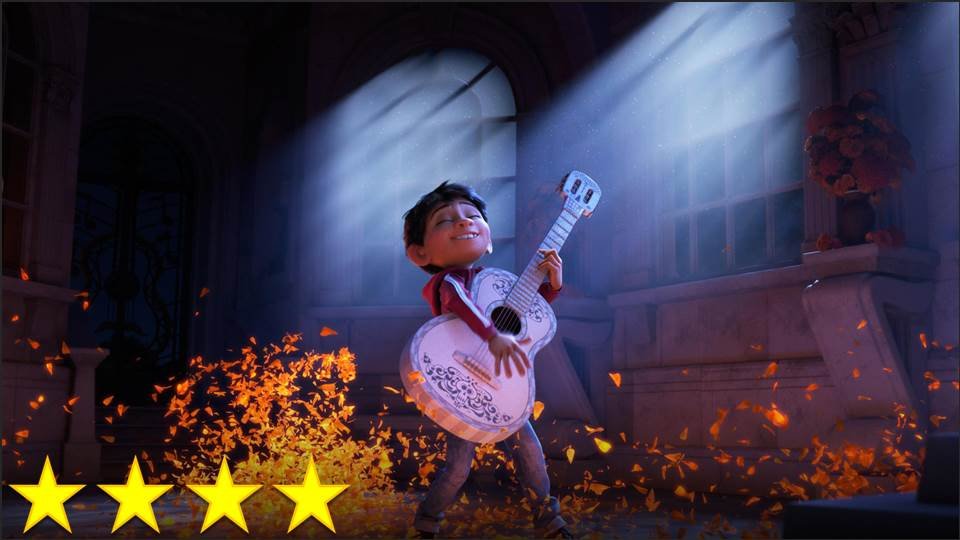The general rule of thumb when it comes to my opinions on Pixar films is this: other people complain about the ones I like, and I complain about the ones other people like. I like a different tone and sentiment than the one Pixar usually offers, and it’s the tone they offer that makes so many people love Pixar. It’s obviously more complicated than this though – even though I’ve heard people complain plenty about Inside Out, it’s generally regarded as a great Pixar movie, and I’m actually in the camp that really likes this one. My brother, a far bigger Pixar nerd than I, also loved Inside Out, but I like Coco a heck of a lot more than he did, and it’s hard for me to understand this disparity.
The main reason why he didn’t like the movie is that, according to him, it doesn’t feel like a “real” Pixar movie. He likes how most Pixar films give humanity or “souls” to objects and species that we generally don’t think have them: bugs, toys, cars, rats, monsters, robots, Scottish people, etc. That being said, The Incredibles doesn’t do this, and Cars 2 does, so go figure. He does have a point though: Coco feels more like it could come from Disney’s name-brand animation studio just as easily, and it does feel a little more formulaic and cliché than Pixar’s average feature. (He noted that The Emoji Movie, which came out first, has a remarkably similar plot, and yet The Emoji Movie is the one that gets points off from critics for being too cliché.) So I probably shouldn’t have enjoyed the film as much as I did.
To be fair, I actually have a bias towards this film – one of the makers of the film came to my college campus and gave us a sneak peak, so I feel a special attachment to it – but according to Rotten Tomatoes, 224 out of 232 critics also liked it, so there must be something here. Part of why it works is the very fact that Pixar was trying to do something different. They told a different kind of story than usual with a different style (certainly with darker comedy than usual), and their experimentation shows that they have some range. The visual style is particularly dazzling, and I think the introduction of this new color pallette to the (generally bland) look of CGI animated films is one of the best things to happen to the animation industry in a decade.
More importantly though, much like with The LEGO Movie, this film knows what it’s doing when it uses the clichés. It’s taking a formula we’ve all seen before and using it to fully show off a fresh, vivid, imaginative, and highly detailed world. Pixar is using every trick in the book here – even tricks going back to “Skeleton Dance” – to give us an old-fashioned fantasy adventure film with lots of great music. Even the film’s opening narration uses a kind of visual storytelling I’ve never seen before, and it serves as a great callback to old shadow puppet shows. It’s also worth noting that this film will be, for many American children and probably a number of American adults, the first time they see a film that expects them to identify with an explicitly Mexican protagonist, which also makes the film feel fresh to me.
Still, I think I’m mostly pulled in by the emotion in the film. Pixar hasn’t done a lot of movies about artists. They’ve done films about characters who want to find their families (Finding Nemo), characters who feel rejected by their families (Toy Story), characters who miss their dead family members (Up), characters who have dysfunctional families (The Incredibles), and so on. This is a story about family as well, but much like The Little Mermaid, it’s a good, old-fashioned story about someone who wants to do something that’s considered acceptable by the powers that be. It’s a film about an artistic rebel – and a far more relatable one than Remy.
It’s always music and the arts that grab me emotionally, and this film does a beautiful job of depicting not only how music can connect people and bring out the best in people. It perfectly captures the experience of being a kid who forms a bond with someone he’s never met because they speak the same artistic language and share a special passion.
I used to be that kid. For me it was people like Jim Henson. I can’t help but wonder who it will be for the kids who see this film, and wonder what lives they’ll lead because of it.

